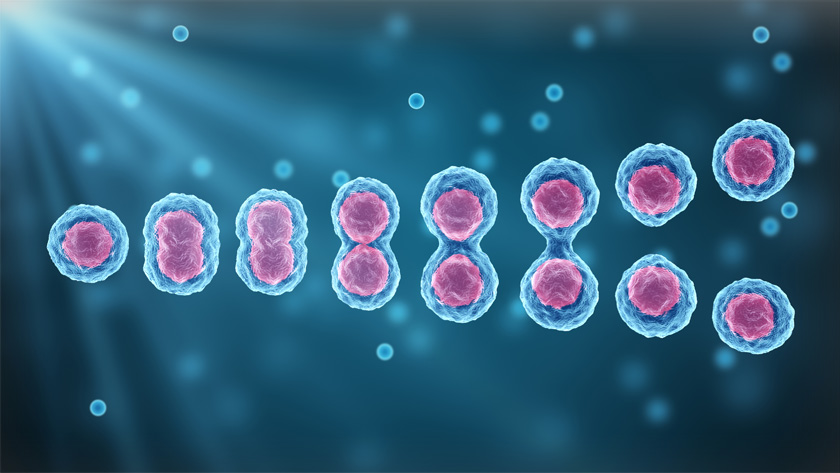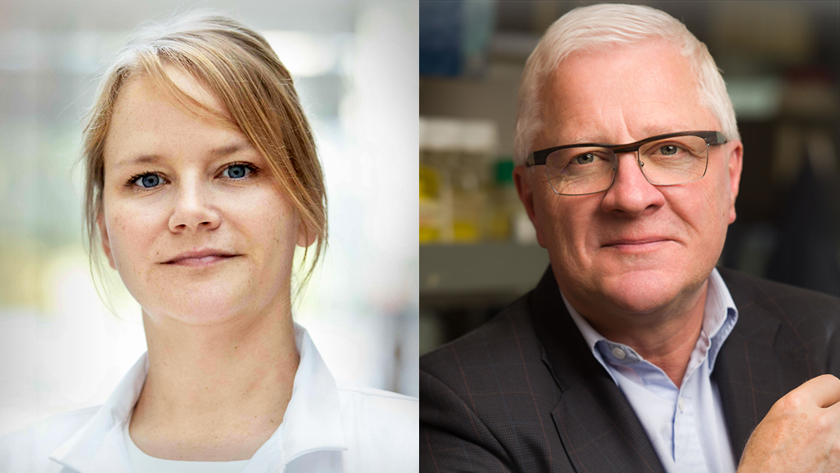
Most of us try to live a balanced life while trying to meet all of our demands. Processes inside our body, such as the formation of new blood cells, also strike a similar balance.
The continuous supply of new blood cells throughout our lifetime relies on a rare population of stem cells known as long-term hematopoietic stem cells. These cells must find a balance between making new blood cells and preserving their population.
Researchers have shown that these blood stem cells generally exist in a dormant state. When new blood cells are needed—such as during blood loss—the body sends signals that ‘activate’ some of them to produce blood cells. Others remain dormant, possessing a property known as latency that enables their numbers to be maintained. Until now, the processes that govern latency have remained largely unknown.
A previous study, led by Princess Margaret Cancer Centre Senior Scientist Dr. John Dick, revealed that the gene INKA1 was important in regulating latency in cancer stem cells in leukemia.
Given the similarity between blood stem cells and leukemia stem cells, the team investigated whether the same mechanisms are involved in controlling normal blood production. These more recent results were published Nature Immunology.
In this latest study, postdoctoral fellow Dr. Kerstin Kaufmann and the research team were able to use advanced molecular techniques to confirm their guess. Their findings revealed that expression of INKA1 in long-term hematopoietic stem cells kept the cells in a latent state. They further identified two subsets of long-term stem cells that were linked to pathways controlled by INKA1: one that responds quickly to generate new blood cells and eventually becomes depleted; and another that remains dormant and maintains the ability to self-renew.
“Here we have identified that there are two types of long-term blood stem cells: one that can respond quickly to repopulate blood cells when the body desperately needs them, and another type that plays the slow game and remains dormant in order to preserve and maintain the population of stem cells,” says Dr. Dick.
“While these findings could have implications for the development of cell therapies, they also shed light on our fundamental understanding of how new blood cells are made and maintained in the body.”
This work was supported by the German Research Foundation, the University of Toronto’s Medicine by Design initiative, the Canada First Research Excellence Fund, the Canadian Institutes of Health Research, the International Development Research Centre, the Canadian Cancer Society, the Terry Fox Research Institute, the Ontario Institute for Cancer Research, the Government of Ontario and The Princess Margaret Cancer Foundation. J Dick holds a Tier 1 Canada Research Chair in Stem Cell Biology.
Kaufmann KB, Zeng AGX, Coyaud E, Garcia-Prat L, Papalexi E, Murison A, Laurent EMN, Chan-Seng-Yue M, Gan OI, Pan K, McLeod J, Boutzen H, Zandi S, Takayanagi SI, Satija R, Raught B, Xie SZ, Dick JE. A latent subset of human hematopoietic stem cells resists regenerative stress to preserve stemness. Nat Immunol. 2021 Jun 22. doi: 10.1038/s41590-021-00925-1.

(L) Dr. Kerstin Kaufmann is a postdoctoral fellow in Dr. John Dick’s lab; (R) Dr. John Dick is a Senior Scientist at the Princess Margaret Cancer Center and holds a Tier 1 Canada Research Chair in Stem Cell Biology (Photo credit: imagesbydelmar.com).




